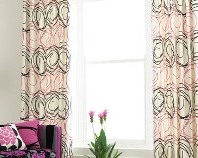Celebrating Morocco's Majorelle Gardens
 October 17, 2011
October 17, 2011  Blue Workshop, Majorelle Gardens
Blue Workshop, Majorelle Gardens Janet Ramin - The deep cobalt blues and contrasting bright lemon yellows that compose the color palette of the Majorelle Gardens appear to have stepped out of a Matisse painting. Every scene, every vista, everywhere you look could be the setting of an unforgettable painting. The Majorelle Gardens were the brainchild of French artist Jacques Majorelle, a contemporary of Henri Matisse. Majorelle envisioned a green, cool oasis amidst the hot red Marrakesh desert and proceeded to turn a mirage into reality.
Janet Ramin - The deep cobalt blues and contrasting bright lemon yellows that compose the color palette of the Majorelle Gardens appear to have stepped out of a Matisse painting. Every scene, every vista, everywhere you look could be the setting of an unforgettable painting. The Majorelle Gardens were the brainchild of French artist Jacques Majorelle, a contemporary of Henri Matisse. Majorelle envisioned a green, cool oasis amidst the hot red Marrakesh desert and proceeded to turn a mirage into reality.
Despite a fruitful association with Morocco, Jacques Majorelle was not a native of the country, nor did he start his artistic career there. He was born and raised in Nancy, France, of a very artistic family. His father was the famous ebeniste or cabinetmaker, Louis Majorelle. His father helped found the School of Nancy – a group of designers, artists, and cabinetmakers famous for their Art Nouveau style sculptures, glasswork and cabinetry. With this background, Jacques easily moved through French artistic circles, coming into contact with many of the artists of the early twentieth century.
 (Art Nouveau style building)But when he developed tuberculosis, Majorelle was forced to move to sunnier climes, first stopping in Spain, then eventually further south, into Egypt and Morocco. This move became a turning point in his artwork – the tribal and desert scenes he encountered became the source for his Orientalist period of work. He painted Bedouin natives and life behind the walled medina.
(Art Nouveau style building)But when he developed tuberculosis, Majorelle was forced to move to sunnier climes, first stopping in Spain, then eventually further south, into Egypt and Morocco. This move became a turning point in his artwork – the tribal and desert scenes he encountered became the source for his Orientalist period of work. He painted Bedouin natives and life behind the walled medina.
 (Casbah by Jacques Majorelle) Majorelle eventually immersed himself with the French community in Marrakesh and by 1919 decided to settle down there. He also began to plan his oasis in the desert, the Majorelle Gardens.
(Casbah by Jacques Majorelle) Majorelle eventually immersed himself with the French community in Marrakesh and by 1919 decided to settle down there. He also began to plan his oasis in the desert, the Majorelle Gardens.
Majorelle started with a palm grove and added cacti, bougainvillea, jasmines, bamboo vines, and water lilies. The bamboo grew tall to form canopies over walkways. The jasmines perfumed the air. And the water lilies floated through the pools. He then paired up with architect Paul Sinoir to create the Blue Workshop, the main building in the gardens (see top photo). Majorelle wanted the Blue Workshop to follow the simple, yet elegant lines of Moroccan homes in the medina.
 (Majorelle Gardens)Majorelle noticed the brilliant cobalt blues found in Moroccan tile work and windows and used the same hue for the house and all over the gardens. Applying his painterly eye, Majorelle added accents of lemon yellow through clay pots, windows, and trim which in turn emphasized the blueness of the cobalt blue. The blue color became so famous and widely copied, that the specific hue forever became known as Majorelle blue.
(Majorelle Gardens)Majorelle noticed the brilliant cobalt blues found in Moroccan tile work and windows and used the same hue for the house and all over the gardens. Applying his painterly eye, Majorelle added accents of lemon yellow through clay pots, windows, and trim which in turn emphasized the blueness of the cobalt blue. The blue color became so famous and widely copied, that the specific hue forever became known as Majorelle blue.
(Blue Workshop - Stairs)
(Blue Workshop - Window)Besides painting canvases of Maroc life, Majorelle also became involved in the tourism promotion of Marrakesh in the 1940s and 1950s by creating travel posters. At the height of his career, he also met Prime Minister Churchill at one of the grand hotels in Marrakesh, La Mamounia. Through Churchill’s influence, Majorelle was chosen to help in the decoration of the hotel. Unfortunately, his garden oasis did not last long. Majorelle died in a fatal car crash in 1962 and the gardens gradually deteriorated through neglect.
In 1980, fashion designer, Yves St. Laurent, along with partner Pierre Bergé, rescued the Gardens from decay. They started to recover and replant the wide array of plant life and added new species from around the world. St. Laurent also converted the Blue Workshop into the Islamic Museum which showcased Majorelle paintings as well as native pottery, textiles, jewelry, and woodworks.
St. Laurent’s improvements, implementation of irrigation systems, and the creation of a foundation ensured the maintenance and continuance of the Majorelle Gardens even after his death. Two highly creative spirits – Majorelle’s and St. Laurent’s – unite to create a beautiful, tranquil haven in an unforgiving environment, a true oasis, and a great legacy for future generations.
 Are you interested in learning more about the history of architecture and interior design? Take a look at Sheffield School's Complete Course in Interior Design. At Sheffield, you'll learn how to transform a space, create color schemes, and select furniture, lighting, and accessories.
Are you interested in learning more about the history of architecture and interior design? Take a look at Sheffield School's Complete Course in Interior Design. At Sheffield, you'll learn how to transform a space, create color schemes, and select furniture, lighting, and accessories.
 Jacques Majorelle,
Jacques Majorelle,  Morocco,
Morocco,  art nouveau in
art nouveau in  architecture,
architecture,  art,
art,  color,
color,  outdoor
outdoor 












Reader Comments